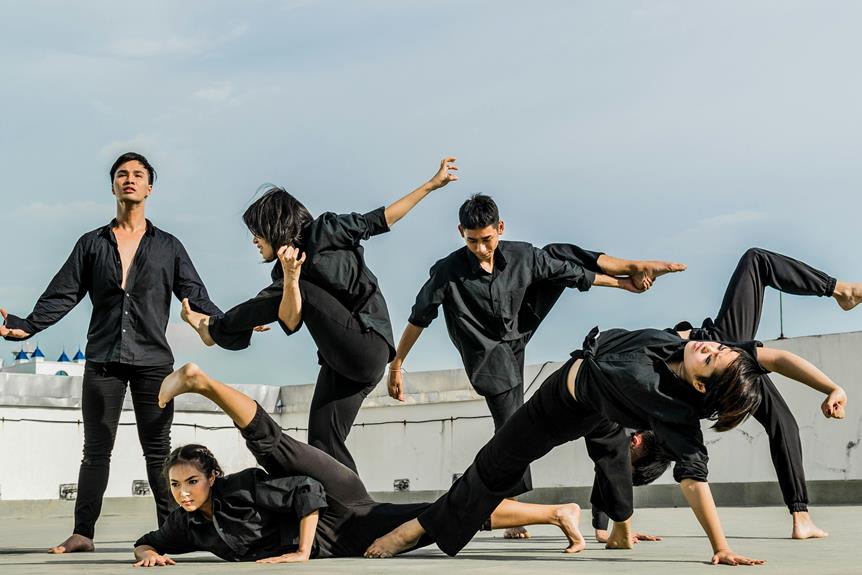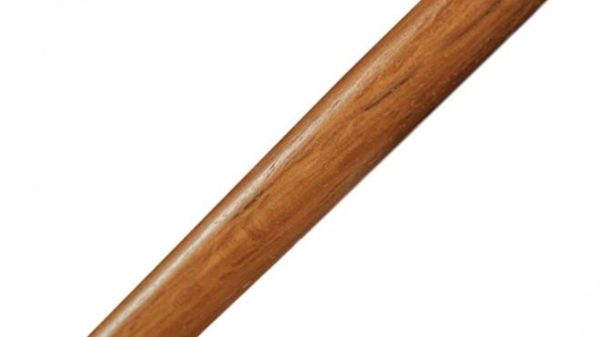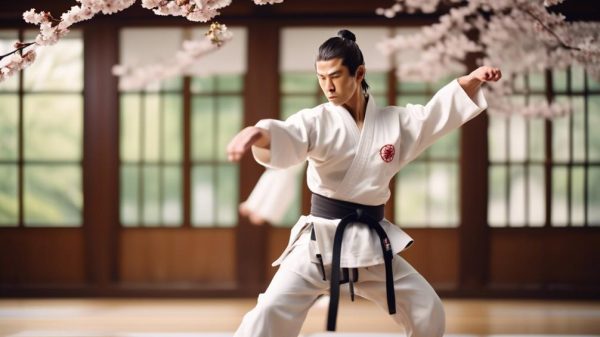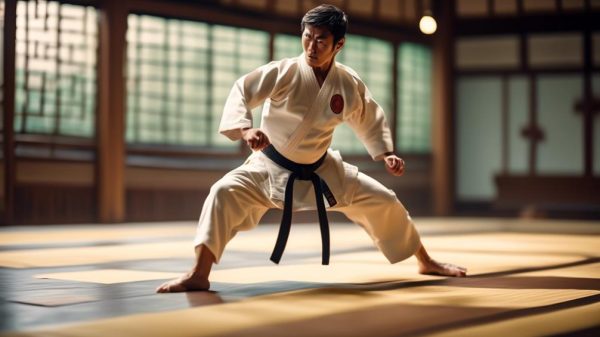Benefits of Low Blocks
Proper Form and Technique
Consistent practice, both with partners and alone, is paramount for honing the low block technique and improving defense against lower body attacks.
By dedicating time and effort to perfecting these skills, martial artists can significantly enhance their ability to defend against various strikes and kicks.
Common Mistakes to Avoid
Mastering the low block technique demands precision and attention to detail to ensure its efficacy in defending against lower body strikes and kicks.
Let’s get into some common mistakes that many martial artists often make and explore effective strategies to address them:
| Common Mistakes | Effective Strategies |
|---|---|
| Dropping the Arm Too Low | Maintain optimal height to defend against low kicks effectively. |
| Stiff Arm Movement | Emphasize fluidity in your motion to facilitate quick and efficient blocks. |
| Neglecting Footwork | Coordinate your footwork with the block to enhance stability and balance. |
| Overextending the Block | Execute controlled movements to avoid vulnerabilities and maintain solid defense. |
| Focusing Only on the Arms | Involve your entire body in the defense to create a comprehensive shield against attacks. |
Low Block Variations
As a seasoned martial artist, getting into the diverse adaptations of the defensive tactic known as the low block can enrich your arsenal for effectively countering lower body strikes and kicks.
Low block techniques involve skillfully deflecting or halting incoming strikes aimed at the lower body, fostering a solid defense.
When exploring shift combinations, you can smoothly transition from defense to offense, maintaining a robust defensive posture while seizing opportunities to strike back.
The array of variations in low blocks enables personalization to suit individual preferences and specific combat situations.
By honing different low block methods, martial artists can enhance their defensive skills, cultivating a versatile skill set adaptable to a range of combat scenarios.
- Mastery of Precision and Timing
- Fluidity and Grace in Movement
- Strategic Positioning and Angling
- Seamless Transitions between Techniques
Training Drills for Low Blocks
To enhance proficiency in low block techniques, structured training drills can be implemented to refine defensive skills and promote quick, precise responses to lower body strikes in martial arts practice.
These drills can be performed both with a partner and in solo practice to develop muscle memory and improve reaction time.
Below are examples of training drills for low blocks:
Partner Drills: Work on low blocks with a partner simulating attacks. Focus on timing and accuracy to effectively defend against strikes.
Solo Practice: Practice low block movements alone, ensuring your form and technique are correct. This helps reinforce muscle memory and enhances your ability to react swiftly to incoming strikes.
Incorporating Low Blocks in Sparring
In the realm of sparring, the art of incorporating low blocks is crucial for fortifying your defensive arsenal against lower body strikes, enabling you to thwart attacks and unleash potent counteroffensives.
As a seasoned martial artist, here are key points to consider when integrating low blocks into your sparring repertoire:
- Timing: Master the timing of your low blocks to intercept the opponent’s strike precisely as it approaches, maximizing your defensive efficiency.
- Precision: Ensure that your low block covers the designated target area with utmost precision, leaving no room for vulnerability.
- Seamlessness: Seamlessly transition from your low block into a swift and calculated counterattack, maintaining fluidity in your defensive-to-offensive maneuvers.
- Awareness: Cultivate heightened awareness during sparring sessions, anticipating and adapting to your opponent’s diverse strategies to effectively neutralize threats and seize opportunities.









